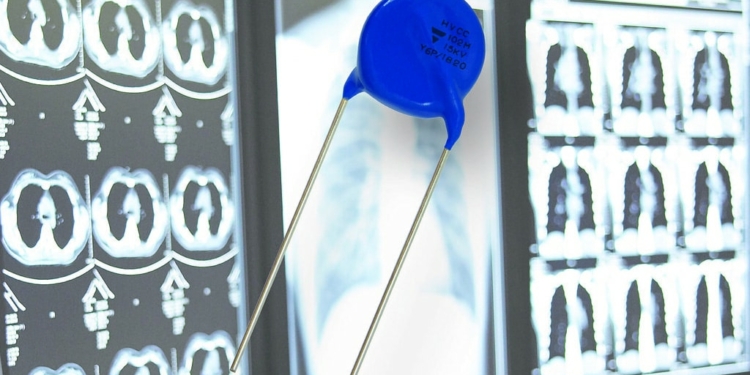Source: Vishay news
MALVERN, Pa. — April 29, 2019 — Vishay Intertechnology, Inc. (NYSE: VSH) today introduced a new series of radial-leaded high voltage single layer ceramic disc capacitors in compact sizes. The industry’s only such components to deliver high capacitance values of 2 nF, Vishay Roederstein HVCC series capacitors offer guaranteed load life performance of 1000 h at 125 % rated voltage and +105 °C. The dissipation factor is < 1.5 %.
HVCC series capacitors may offer a qualified and high performance drop-in replacement for almost all Murata part numbers starting with DHR, for which the company has sent out an official discontinuation notice. Please refer to Vishay’s HVCC series datasheets to verify requirements.
With their high capacitance, the HVCC devices released today eliminate the need to utilize two 1 nF capacitors in parallel to reach values of 2 nF. For designers, this saves space, reduces assembly costs, and increases reliability in high voltage generators for dental and baggage scanners, medical and industrial x-ray applications, and pulsed lasers.
The devices offer a capacitance range from 100 pF to 2000 pF — with standard tolerances of ± 20 % — voltages from 10 kVDC to 15 kVDC, and operate over a temperature range of -30 °C to +105 °C. HVCC series capacitors are also available with 20 kVDC rated voltage, ± 10 % tolerance, and custom lead styles on request.
The devices consist of a silver-plated ceramic disc with tinned copper-clad steel connection leads offering 0.6 mm and 0.8 mm diameters. The capacitors are available with straight leads with spacing of 9.5 mm and 12.5 mm. The RoHS-compliant components’ encapsulation is made of flame-resistant epoxy resin in accordance with UL 94 V-0.
Device Specification Table:
| Series | HVCC | |
| Ceramic class | 2 | |
| Ceramic dielectric | Y6P | |
| Voltage (VDC) | 10 000 | 15 000 |
| Min. capacitance (pF) | 100 | 100 |
| Max. capacitance (pF) | 2000 | 2000 |
| Mounting | Radial | |
Samples are available now from Vishay. Production quantities are available with lead times of eight weeks.































